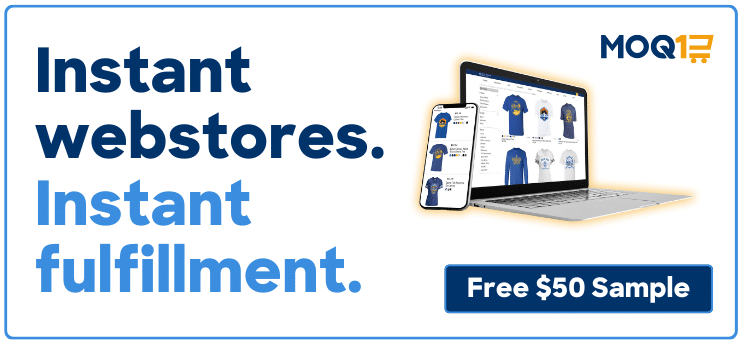Do you remember in elementary school when your art teacher first asked you to draw a circle? It probably wasn’t perfect. Maybe it was a bit squiggly. Or perhaps it wasn’t a fully closed loop. But you probably managed to get the idea of a circle on paper. Anyone looking at your drawing could likely tell what you were getting at, even if there was room for improvement.
That’s a little bit like where the promotional apparel industry is when it comes to the circular economy, which strives for a system where materials never turn into waste but are constantly reused, sometimes in completely different forms. To say that there is a long way to go might be an understatement, but some companies are paving the way. Others are doing what they can and getting a feel for a future where circular economies are the industry norm.
Start Somewhere
In the circular economy model, raw materials enter the supply chain and are designed into durable products that can ultimately be resold, repurposed or recycled. What does that look like in promo? How does a company inch closer in that direction?
According to Jason Lucash, CEO of Rupt, a new Austin, Texas-based supplier making an industry splash with its sustainability-forward approach, look to the promo companies that have already wrestled with those questions.
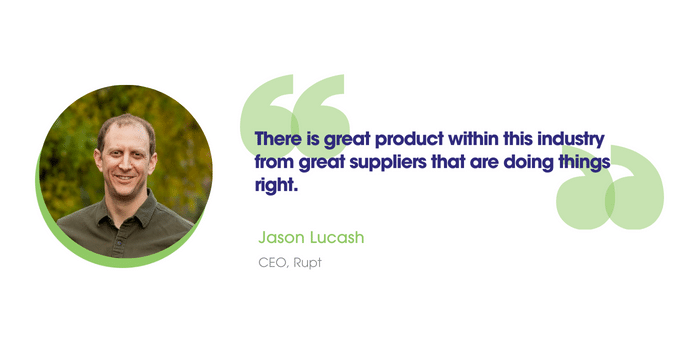
“There is great product within this industry from great suppliers that are doing things right,” Lucash says. “There’s just a handful of them. I encourage other suppliers to do the same thing to elevate the industry as a whole.”
At Rupt, which supplies hard goods, every single product the company makes is from recycled materials. The company also focuses on second-life packaging and carbon offsets for every product through a third party.
“From a circular economy perspective, we’re using raw materials to repurpose into physical product and having packaging live on after it’s done being boxes,” Lucash says. “We don’t have a fully closed loop yet, but we’ll have some sort of initiative in the future for recycling tech products.”
Fellow Texas-based supplier Numo applies creativity to the circularity challenge with its upcycling plan, which takes material from a billboard or other fabric product and repurposes it into a line of tote bags.
“Extending any promotional product’s life – either in its initial form or in its new upcycled form – is a huge win not only for the environment, but also for the advertiser,” says Jim Martin, Numo’s owner. “The cost per impression of something in the garbage is infinite.”
Toronto-based supplier Redwood Classics Apparel first introduced its upcycling concept in 2014 and has made it a core part of the company’s mission. Prioritizing circular solutions whenever possible, Redwood Classics uses landfill-destined deadstock (unsellable inventory) and turns it into upcycled fabric.
“This is where our industry needs to go if we wish to be sustainable and to set an example for other industries,” says Kathy Cheng, president of Redwood Classics. “Just because things have been done a certain way for a long time doesn’t mean we can’t reinvent ourselves – in fact, I think it is imperative that our industry does reinvent itself.”
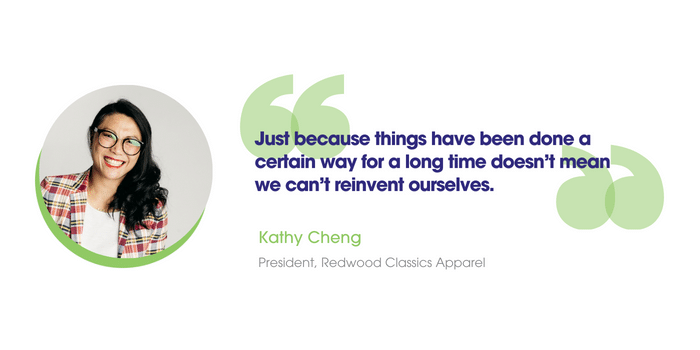
Resale Means Results
In a news environment with no shortage of gloomy updates about our planet’s condition and resources, circular strategies are showing legitimately positive results. For the apparel industry, resale initiatives represent one of the most straightforward steps into the circular economy.
According to a study on circular strategies’ impact on carbon reduction by Trove, a branded resale program solutions provider, and Worldly, an impact intelligence platform for the apparel industry, circular initiatives like resale programs have the potential to lower carbon emissions for premium apparel and outdoor brands 16% by 2040. The brands that maximize their revenue from resold items will see the greatest share of Scope 3 emissions benefits, the study says.
PPAI’s director of sustainability and responsibility, Elizabeth Wimbush, says that is nothing to sneeze at in the battle against climate change.
“Scope 3 emissions account for the lion’s share of most companies’ carbon output, so any reduction in this area will be a win,” she says.
Moreover, the potential for industry-wide gains is an amplified version of the impact individual companies can make while still growing their annual revenue. The Trove and Worldly study found that, factoring in revenue growth, a company can decrease its need for new production by 23-35% per year through resale programs.
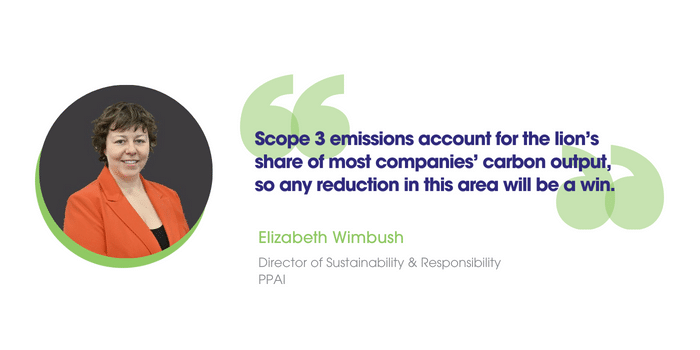
Most of the existing models for apparel manufacturing are at odds with a circular economy, but you don’t have to squint too hard to see its potential. As companies in various industries make more strides in resale, it will go from a sneaky competitive advantage for those that can pull it off to a clear disadvantage for those that can’t.
“Distributors that prioritize partnering with suppliers that focus on resale will have a growing share of the market as this ask becomes more and more the norm,” Wimbush says.
3 Strategies To Increase Circularity
According to a study for the apparel industry conducted by Trove and Worldly, premium apparel and outdoor brands have the greatest carbon reduction potential available through resale options. The study also identifies three strategies to minimize waste and carbon emissions for products through extended-life goals:
- Generous warranties and timelessness: Warranty programs can help avoid outcomes where end users create waste simply because the product does not meet their expectations.
- Repair and component replacement: Repairing a product avoids waste, and it has the added benefit of increasing clients’ loyalty.
- Trade-in and resale initiatives: This is how to create a truly circular economy. Whether the product can be sold as is or its material repurposed into something new, kicking a product’s end-of-life down the line is the most impactful sustainability goal a company can strive for.
It’s All About Where A Product Starts
True circular programs must be planned, not reactive. Wanting to recycle a product does not guarantee that it is made of material that will allow for it to be reused. Durability, design and quality are also key factors.
“On the sourcing side, it’s important to look at product quality upfront to make sure you are sourcing items that have resale and recycling potential from the get-go,” says Irys Kornbluth CEO of Los Angeles-based supplier Everywhere Apparel, which has circularity baked into its operations.
Last year, Patagonia re-entered the promotional marketplace, welcoming products with embroidered logos through its Worn Wear program, which operates on a resale model. Not uncontroversial in its decision process, Patagonia is known to be selective in who it works with in its stated mission to be a sustainable and responsible company.
This dances around another issue that drives home the intention required for successful circular movements. The type of branding put on a promotional product may magnify or minimize the product’s resale potential.
“Choose artwork that is as timeless as possible,” advises Kornbluth.
Everywhere Apparel focuses on the decoration factor by taking a circular approach to its clients as well. Working with the same clients repeatedly helps the company grow those relationships and allows the clients to better understand how circular programs work so the mission can become collaborative.
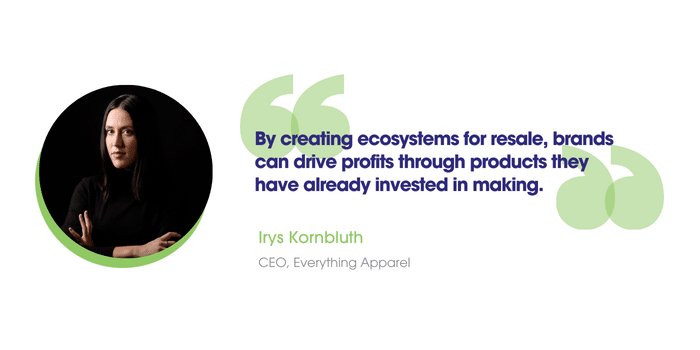
A True Closed Loop
When it comes to circularity, Everywhere Apparel sets a high bar. As CEO Irys Kornbluth explains, the recycled apparel company has managed to create a system that meets the ultimate definition of circularity.
“Everywhere operates a closed loop model where all of our products are able to be returned to us for recycling,” she says.
The average American throws out 80 pounds of clothing each year, according to Eco-Age, a sustainability consulting firm. Textile-to-textile recycling combats this by using textile waste to create new products.
Kornbluth readily admits that the fully “closed loop model” that Everywhere operates under is not easy to establish given the ways things have been done in the industry for so long.
“I’m not going to lie – recycling apparel today is very complex and challenging,” Kornbluth says. “We are building these systems from the ground up and battling a landscape where overproduction is rampant. We are also dealing with a world of materials that have not been designed with an end-of-life strategy and where blended fibers make things difficult to recycle.”
Kornbluth adds, “I think the one thing I can say here is that creating a new material out of waste is very rewarding and we can hit the same level of quality as a virgin fiber product. It makes me very excited for the future.”
Plan For Where Your Product Ends
A product will eventually reach a point where it cannot be resold or repurposed. In such cases, waste mitigation remains an important part of the circular economy.
The circular economy model acknowledges that creating a product inherently comes with the responsibility to recognize that it will come to the end of its useful life. At that end, a system must exist to collect, sort and recycle materials into new inputs to begin the cycle again.
Boston Consulting Group, in its examination of end-of-life recycling in the garment industry, identifies common challenges producers of any product faces in completing the circle, from collecting and sourcing processes to recycling at scale. For promo, it’s a problem ripe for collaboration and cooperation within the industry to find solutions.
“By creating ecosystems for resale, brands can drive profits through products they have already invested in making,” Kornbluth says. “Resale is an important part of extending a product’s life cycle; however, it is just a piece of the puzzle. We also need real end-of-life recycling systems for apparel that cannot be resold.”
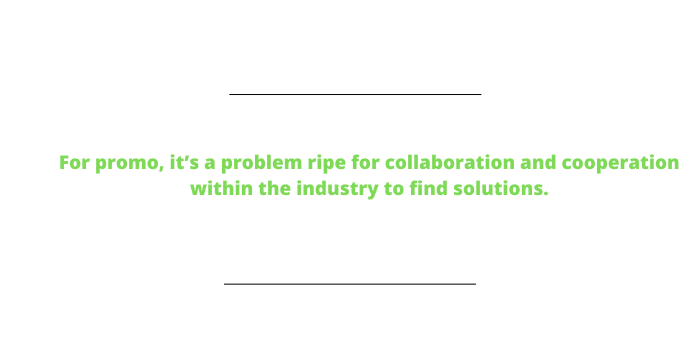
Use Case – From Event Décor To Attendee Swag
Promo services firm commonsku recently collaborated with Numo for its annual skucon conference in January. Each guest sat at a table covered with tablecloths provided by Visual Textile Resource, and after the event, Numo repurposed that material into pouches sent to attendees.
This collaborative approach to sustainability recognizes how the promo landscape can fit into the circular model. It was also very intentional.
Visual Textile Resource ensured the tablecloth material was possible to repurpose.
The program was implemented in an environment where promo is often found: events.
As a promo industry conference, it was attended by suppliers and distributors who witnessed the program in action.
“With Numo’s incredible upcycling program, we wanted to encourage distributors to think about a product’s life cycle through a sustainable outlook,” says Mark Graham, president and chief brand officer at commonsku.
The industry companies’ collaboration illustrates that it doesn’t take much to look beyond the circular economy’s challenges to see its possibilities.
“This is exactly the kind of life cycle we should be thinking about when we consider promotions for our customers,” Wimbush says, “thinking how we can create smart merch experiences that last and, at the same time, reduce our impact.”
Promo-Specific Tips
Some factors the promo industry should keep in mind when establishing their circular economy model.
- Sourcing materials capable of being recycled.
- “Timeless” branded art that encourages resale.
- Generous warranties to encourage end users to return unneeded products.
- Repair and replacement options.
- Resale initiatives
- Collection and sorting programs for recycling
- Mechanisms or processes for recycled commodities to return to the cycle as new inputs.
Auping is a news editor at PPAI.


